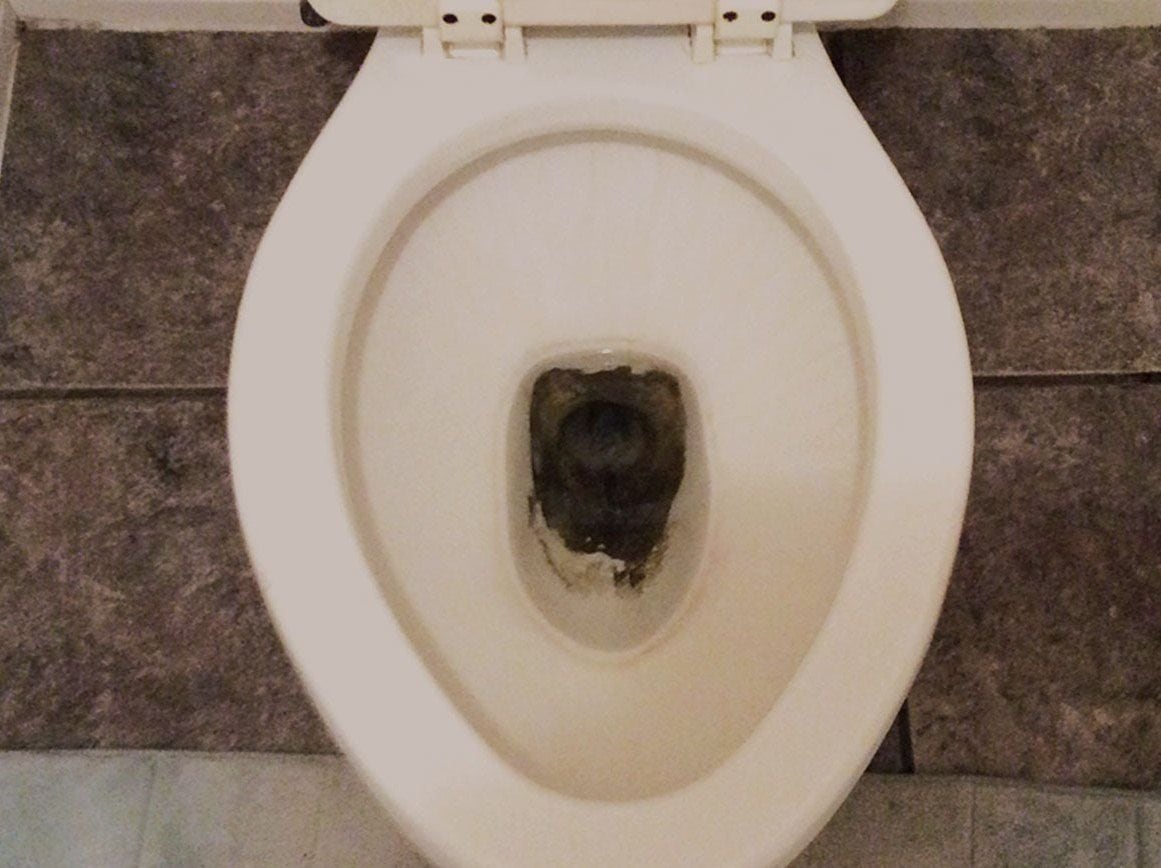Finding black sediments and stains in your toilet bowl? Don’t worry, there’s more than one simple solution to this common bathroom problem!
It’s not unusual to find black spots or sediments in your toilet bowl or tank, especially if the toilet hasn’t been updated or replaced within the last 25 years.
Typically these stubborn stains and sediments occur when a toilet has been sitting for long periods of time without any use.
The black sediments and stains you see in your toilet bowl are typically caused by hard water. Hard water occurs when toilet water contains iron, magnesium, or calcium deposits from being filtered through soft rock. Sediment buildup and hard water stains can be easily removed with a commercial cleaner or even vinegar from your kitchen.
Table of Contents
What Are the Black Sediments?
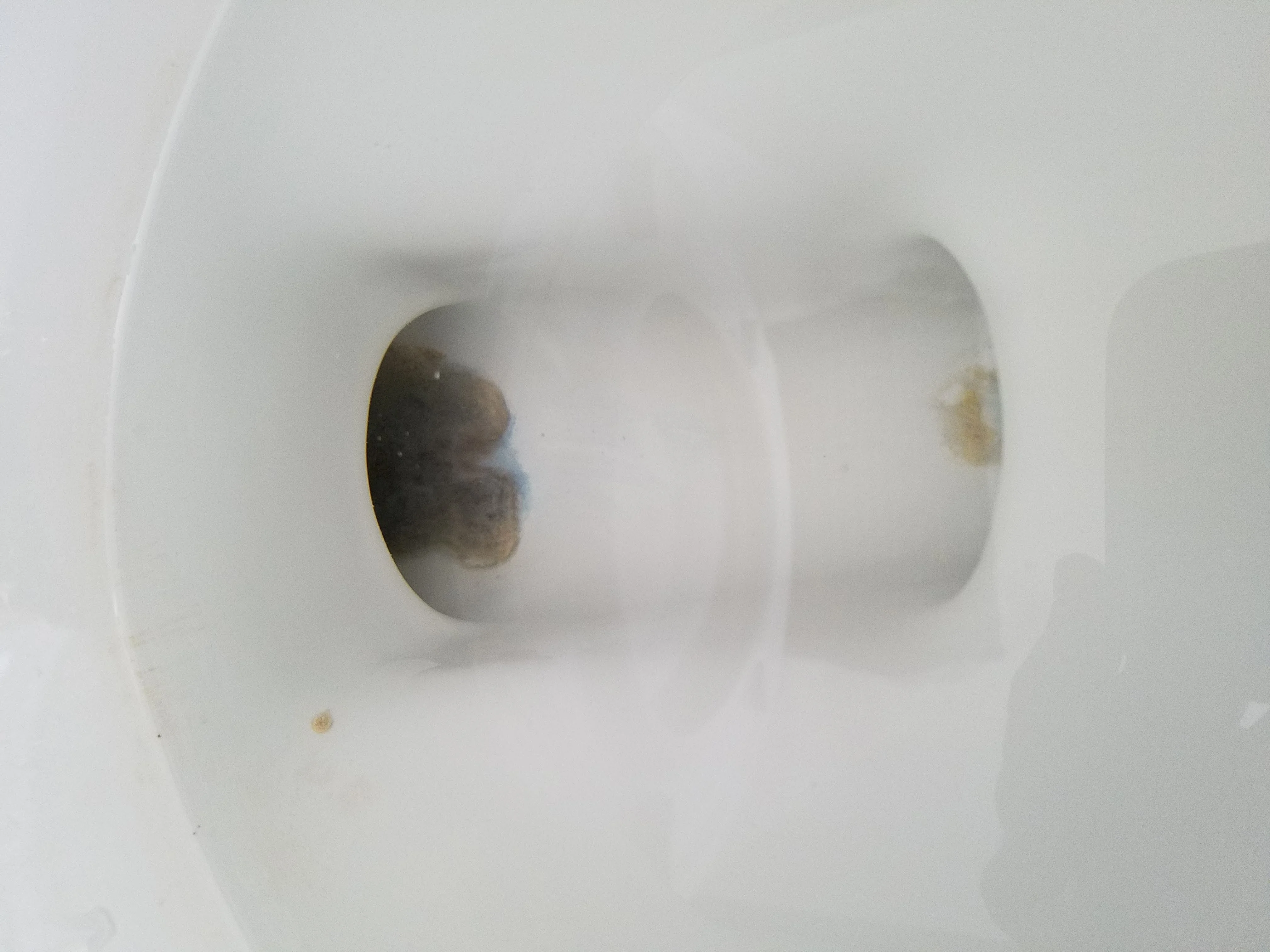
The black stuff in your toilet is most likely mineral deposits from dissolved iron and manganese.
Mineral Deposits
Mineral deposits occur when there’s a high amount of iron in the toilet water. When hard water droplets dry, they turn a dark color resulting in black sediments.
Hard water stains can also appear as limescale and mineral buildup. It will look like a chalky white residue in toilets and can also appear in faucets or sinks.
Toilet Tank Float
A toilet float is a device inside the tank that allows the water to fill without overflowing. Over time, the toilet float can break down and disintegrate into the toilet bowl.
To avoid sediment buildup from this device, replace the toilet float routinely or contact a plumber to replace it for you.
When black sediments come into the toilet bowl after you flush, it’s most likely because the toilet float needs to be replaced. Sediments can also be caused by pipe corrosion which will need to be checked by a plumber.
Black Rings in Toilet Bowl
Black rings in your toilet bowl can be caused by mineral buildup. These rings can be black, brown, or gray. Like black sediments, toilet bowl rings are typically caused by hard water.
Black Mold
Black mold can occur in toilets when you leave the bathroom unattended for long periods of time. Even a weekend vacation can cause mold buildup, especially if there is waste left in the toilet bowl.
Closed toilets are a viable breeding ground for mold because of the humidity and darkness. Keep an eye out for black mold, and if you find any in your toilet contact a plumber or mold inspector immediately.
How to Remove Black Sediments
Sediments can be tough to remove. If the sediments are not coming off with your typical toilet cleaner, try grabbing some white vinegar from the kitchen to help solve this issue.
Commercial Cleaners
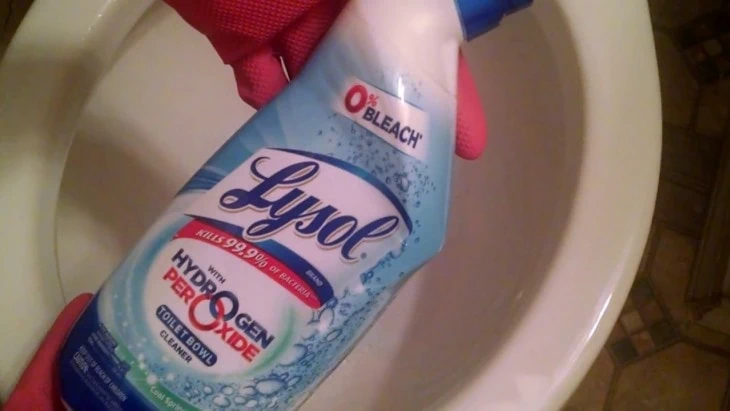
First, try scrubbing the toilet with your regular toilet bowl cleaner (like Lysol) and toilet brush. Some stains can be stubborn, especially if they’re a result of hard water. If your cleaner isn’t getting the job done there are natural remedies you can try instead.
Scrub with Steel Wool
Sediments and stains can remain even after an intense cleaning. If your toilet brush is not removing the stains, try using a different material to scrub out tough spots.
Use the finest grade of steel wool to scrub out these stubborn stains. Steel wool can be used by itself or with household cleaners. Make sure to use 0000-grade steel wool to avoid scratching any porcelain surfaces.
Natural Remedies for Black Sediments
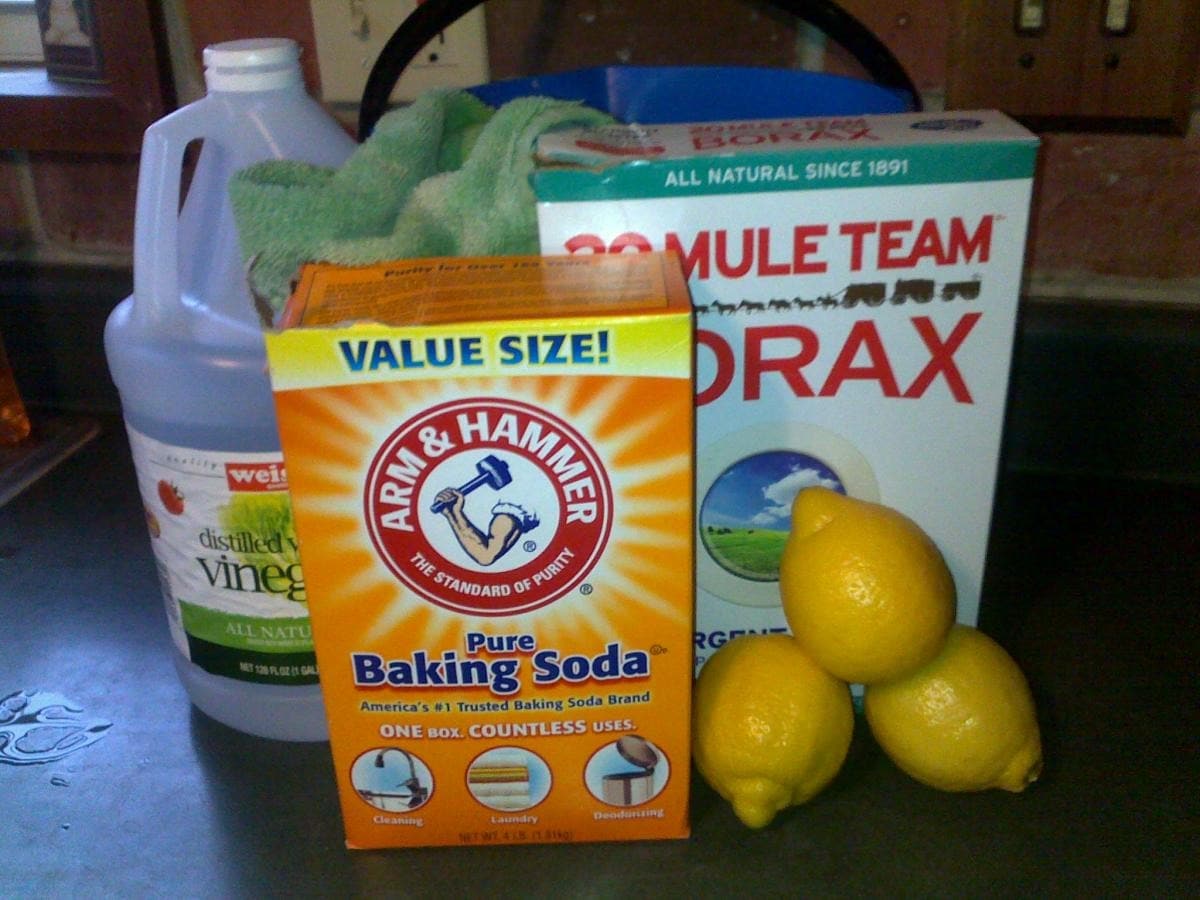
White vinegar and baking soda are natural solutions to removing sediments, stains, and spots from your toilet.
White Vinegar and Baking Soda
Clean your toilet without the harsh chemicals! Take the distilled white vinegar from your kitchen and pour 1 cup into the toilet bowl. Scrub it around the bowl with a toilet brush and let it soak.
Add 1 cup of baking soda to the bowl and another cup or two of vinegar until the solution begins to fizz. Allow the solution to soak for at least 10 minutes before using a toilet brush to scrub the bowl.
Scrub any stains above and below the waterline without flushing the toilet. Let the solution soak again for at least another 30 minutes before scrubbing out any remaining stains.
If there are still stains after 30 minutes, scrub them again with a stiff-bristled brush. Once the stains are gone, flush to rinse the toilet.
Borax and Vinegar
Borax is another natural household ingredient that can help rid your toilet of sediments and stains. Similar to baking soda, Borax is a salt that can be found in everyday household items like toothpaste and lotion but is commonly used as a cleaning product.
Pour about a ¼ cup of Borax and 1 cup of vinegar into the toilet bowl. Mix the solution with a toilet brush and let it soak for at least 20 minutes.
Use the toilet brush to scrub out any stains and flush the toilet to rinse when finished.
How to Avoid Sediment Buildup
Toilet maintenance and frequent cleanings will help avoid sediment buildup and stains.
Keep up with Cleanings
It’s recommended to clean your toilet weekly. Scrub the bowl with your toilet brush to avoid long-lasting stains and let the cleaner soak before flushing to rinse.
Clean with White Vinegar Regularly
Along with your commercial cleaners, use distilled white vinegar to keep your toilet clean. Follow the above steps to clean your toilet with vinegar and baking soda.
This is a natural way to maintain the cleanliness of your bathroom and avoid stains.
Use Your Toilet Frequently
This may seem obvious, but using your toilet often will help prevent rings and stains. Leaving toilets untouched will allow the minerals in the water to set and cause buildup.
Update or Replace Your Toilet
If you’ve had your toilet for more than 25 years, it might be time to update it. Toilets can last for a long time if they’re maintained and cleaned regularly.
Sediment buildup and constant clogging are signs that your toilet may need to be replaced. Contact a plumber to inspect the toilet if you think your bathroom needs an update.
Calcium Buildup in Toilets

The white or rust-colored sediments in your toilet bowl can be a result of calcium buildup.
What is Calcium Buildup?
Calcium buildup forms when the toilet water sits still for a long period of time. This can cause discolored rings in the toilet bowl.
Calcium buildup is the result of untouched mineral-rich water that has not been flushed frequently.
How to Remove Calcium Buildup
Most toilet cleaners will remove the calcium buildup and rings in the toilet bowl. If the stains remain, soak the toilet bowl with a distilled white vinegar and baking soda solution.
Scrub the stains with a toilet brush and soak them in the solution until they’re gone. The best way to avoid calcium buildup is regular toilet maintenance and cleanings.
Why Are There Stains in My Toilet?
Pipe Corrosions
If there are black or rust stains in your toilet, that could mean there are high levels of iron in the toilet water. This is not an immediate health threat, but the iron in the water will oxidize and rust in the toilet if you don’t clean it regularly.
The high levels of iron could be coming from deteriorating pipes, especially if you have an older house. If your toilet is rusting frequently, have a plumber check the pipes for signs of wear and corrosion.
Hard Water Stains
Hard water stains are caused by the water being passed through soft rock before entering the home’s filtration system. These minerals are meant to be removed during the filtration process, but some can sneak through and remain in your toilet water.
High levels of minerals like iron and calcium can cause hard water stains in your toilet.
How to Remove Toilet Stains and Rings
There are multiple household items and commercial cleaners that are safe and effective choices for removing toilet stains.
Borax and Lemon Juice
Remove tough stains with household items like Borax and lemon juice. Use ¾ cup of Borax and 3 tablespoons of lemon juice.
Let the Borax soak in the toilet for at least an hour before adding the lemon juice. Scrub the solution with a toilet brush. You can also use this solution to clean the outside of the toilet.
The lemon juice will help remove any rust stains while also lightening the porcelain. It’s helpful to use this recipe to clean your toilet once a month along with your regular weekly clean.
Clorox Toilet Bowl Cleaner
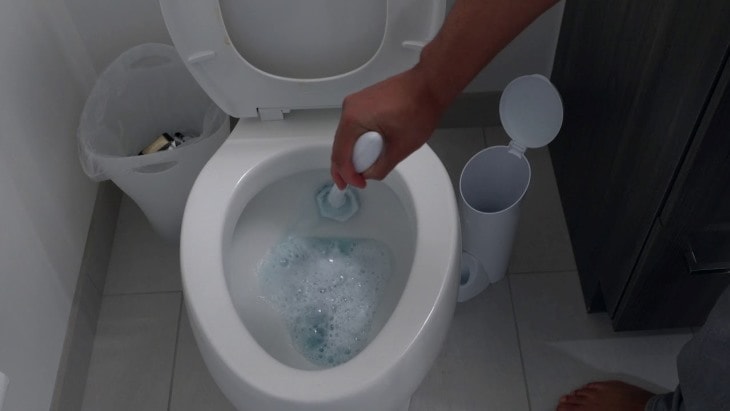
There are specific cleaners for toilets that use bleach to disinfect and remove toilet stains. Some companies sell cleaning sets like the Clorox Cleaning System which is useful for new homeowners and amateur cleaners.
It’s possible that some commercial cleaners won’t be able to remove all of the stains, especially if the toilet is old. Try a vinegar and baking soda solution if your commercial cleaner doesn’t remove all of the stains.
Toilet Bowl Ring Remover
A toilet bowl ring remover can also remove any tough toilet stains. Ring removers are made of pumice stone and are an eco-friendly choice that can help clean your toilet without using chemicals.
They are safe to use on porcelain and typically have a convenient handle that makes it easier to scrub out stubborn stains.
Safety Precautions When Cleaning Toilets
It’s important to keep yourself safe from any harsh chemicals when cleaning your toilet.
Wear a Mask
If you’re cleaning with bleach or other harsh chemicals, protect your face with a mask. Wearing a mask will help you avoid breathing in any harsh chemicals or toxins.
Use Gloves
Protect your skin with rubber gloves when cleaning your toilet. Toilets carry a lot of bacteria that can be harmful to your health. Gloves will also prevent harsh chemicals from irritating your skin.
Wear gloves while you clean your toilet and wash your hands thoroughly when you’re done.
Flush After Cleaning
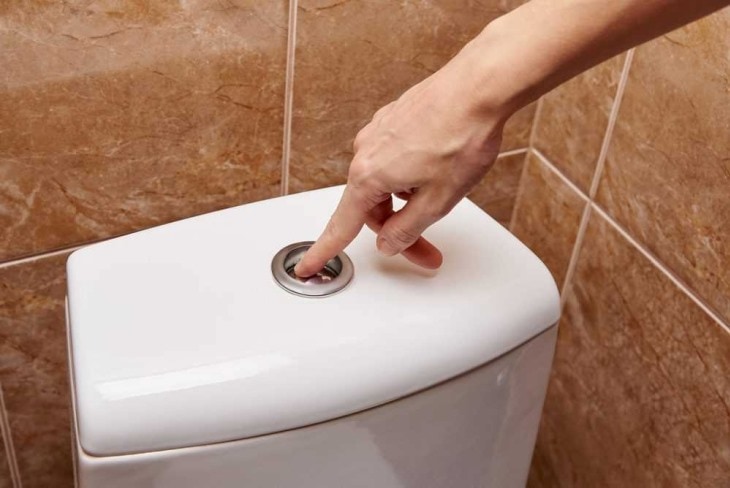
Always flush after you finish cleaning your toilet to rinse any remaining minerals or stains.
Final Thoughts
The best way to avoid black sediments, stains, and spots is to use your toilet frequently and keep up with regular toilet cleanings.
Try to clean your toilet at least once a week to avoid staining, mineral buildup and a smelly toilet. Leaving a toilet untouched for long periods of time will cause rings and stubborn stains.
If your commercial cleaners are not getting the job done, try using ingredients from your kitchen to remove tough spots.
A vinegar and baking soda solution is a tried and true method for getting rid of stubborn stains or buildup. To lighten the porcelain, use a Borax and lemon juice solution to clean and brighten your toilet.
If your toilet is over 25 years old, it might be time for a new one. Contact a plumber with any questions or concerns.

